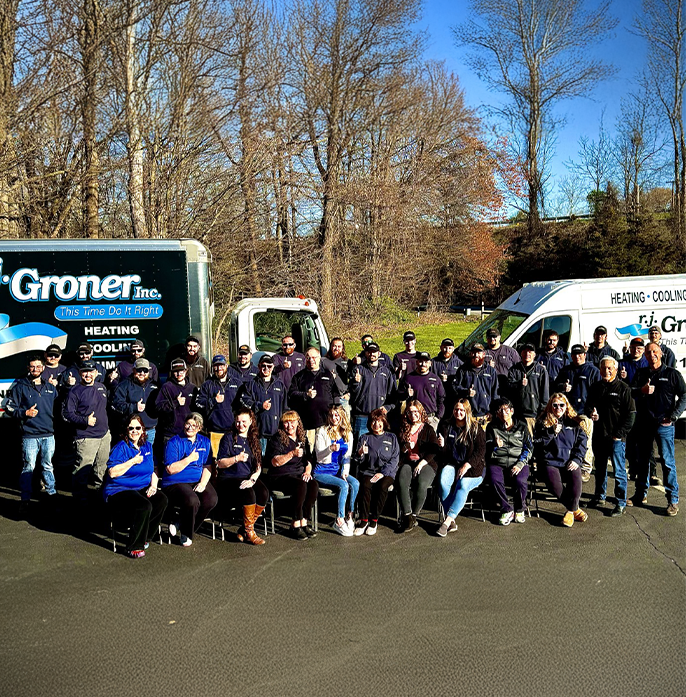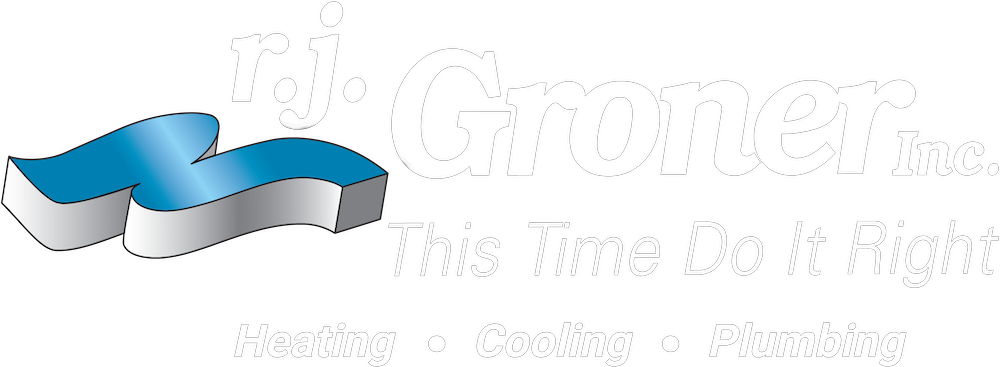Before calling for HVAC repair services, take a moment to review the following tips as they may prevent a service call or help us diagnose your problem more quickly. Just click on your problem below to see our troubleshooting tips.
- Check the settings on your thermostat. Make sure the temperature control selector is set below the current room temperature, and the system switch is on the COOL or AUTO position. The fan switch should be set to ON for continuous airflow or AUTO if you want the blower to operate only while the air conditioner is operating.
- Try to get the air conditioner to turn on by lowering the thermostat to its lowest temperature setting.
- If the air flow out of your registers seems low, check the air filter. An extremely dirty air filter can block air flow.
- Make sure all registers are open and not obstructed.
- Check the power disconnect switch by each unit (outdoor and indoor).
- Check the fuse/breaker at the electrical panel for both the outdoor and indoor unit.
- If the problem persists, please call us
- Check the settings on your thermostat. Make sure the temperature control selector is set above the current room temperature, and the system switch is on the HEAT or AUTO position. The fan switch should be set to ON for continuous airflow or AUTO if you want the blower to operate only while the heat pump is operating.
- Try to get the heat pump to turn on by raising the thermostat to its highest temperature setting.
- If the air flow out of your registers seems low, check the air filter. An extremely dirty air filter can block air flow.
- Make sure all registers are open and not obstructed.
- Check the power disconnect switch by each unit (outdoor and indoor).
- Check the fuse/breaker at the electrical panel for both the outdoor and indoor unit.
- If the problem persists, please call us.
- Check the settings on your thermostat. Make sure the temperature control selector is set below the current room temperature, and the system switch is on the COOL or AUTO position. The fan switch should be set to ON for continuous airflow or AUTO if you want the blower to operate only while the heat pump is operating.
- Try to get the heat pump to turn on by lowering the thermostat to its lowest temperature setting.
- If the air flow out of your registers seems low, check the air filter. An extremely dirty air filter can block air flow.
- Make sure all registers are open and not obstructed.
- Check the power disconnect switch by each unit (outdoor and indoor).
- Check the fuse/breaker at the electrical panel for both the outdoor and indoor unit.
- If the problem persists, please call us.
- Turning your heat pump up a few degrees is a great way to stay cozy in the winter. Unfortunately, your system may not quite reach the temperature on your thermostat. If your heat pump isn’t keeping up with your ideal indoor temperature, check the outdoor temperature.
- These heating systems are highly efficient, but they may not be able to maintain a high indoor temperature if the outdoor temperature is below 36 degrees. Try turning your thermostat up a few more degrees to see if this helps.
- There could also be some maintenance issues with your heat pump. At R.J. Groner Co., we can help you identify the source of your low-temperature heat pump.
Don’t let low heat pump temperatures affect your family’s comfort and safety in the winter. Here are some common issues we can help you diagnose and repair the heating system:
- Damaged compressor valve, reversing valve, or refrigerant charge
- Thermostat calibration issue
- Blocked outdoor unit
- Return duct leak
- Some problems, like a blocked outdoor unit, are easy to solve. Check for a snow drive or ice on the outside component of your heat pump.
- As long as you’re careful to not damage the unit, you can take care of these maintenance issues on your own. Contact us to request an inspection to repair damaged valves, low refrigerant, or other issues.
- Check the settings on your thermostat. Make sure the temperature control selector is set above the current room temperature, and the system switch is on the HEAT or AUTO position. The fan switch should be set to ON for continuous airflow or AUTO if you want the blower to operate only while the furnace is operating.
- Try to get the furnace to turn on by raising the thermostat to its highest temperature setting.
- If the air flow out of your registers seems low, check the air filter. An extremely dirty air filter can block air flow.
- Make sure all registers are open and not obstructed.
- Check the power disconnect switch by the furnace.
- Check the fuse/breaker at the electrical panel for the furnace.
- Check to make sure the gas control valve to the furnace is open.
- Check the pilot light. (Electronic ignitions will not have a pilot light).
- If the problem persists, please call us.
- Do you hear a buzzing, metallic, or whooshing sound from your outdoor HVAC unit? Find out how we can help you diagnose this issue and restore your quiet, efficient heat pump system.
- Metallic sounds, particularly a metal-on-metal sound, is usually an obstructed fan blade. As the fan spins on the top of your outdoor unit, it may be contacting tubing, wring, or even ice.
- Buzzing noises are typically caused by the reversing valve solenoid coil. In most cases, these sounds are normal. As long as your heat pump is still working properly, you shouldn’t be too concerned about buzzing sounds.
- Whooshing noises, particularly loud ones, generally come from a shift to defrost mode. A couple seconds of a whooshing sound as your heater goes into defrost mode and switches the valve is normal.
- Some units make a sound like a washing machine as they start-up or shut down. As long as your system is still operating efficiently, these sounds can be normal.
- Loud vibrations in your HVAC system can be isolated and eliminated with rubber isolation pads. Other vibrations are part of the process and are difficult or impossible to remove.
- Don’t hesitate to contact us at R.J. Groner Inc.. if you hear any metal-on-metal or hissing sounds or if your unit isn’t working properly. These sounds may be caused by a damaged fan, bad compressor valves, or other issues that require professional services.
- Check the settings on your thermostat. Make sure the temperature control selector is set above the current room temperature, and the system switch is on the HEAT or AUTO position. The fan switch should be set to ON for continuous airflow or AUTO if you want the blower to operate only while the furnace is operating.
- Try to get the furnace to turn on by raising the thermostat to its highest temperature setting.
- If the air flow out of your registers seems low, check the air filter. An extremely dirty air filter can block air flow.
- Make sure all registers are open and not obstructed.
- Check the power disconnect switch by the furnace.
- Check the fuse/breaker at the electrical panel for the furnace.
- Check to make sure you have fuel oil.
- If the problem persists, please call us.
- Check the settings on your thermostat. Make sure the temperature control selector is set above the current room temperature, and the system switch is on the HEAT or AUTO position. The fan switch should be set to ON for continuous airflow or AUTO if you want the blower to operate only while the system is operating.
- Try to get the system to turn on by raising the thermostat to its highest temperature setting.
- If the air flow out of your registers seems low, check the air filter. An extremely dirty air filter can block air flow.
- Make sure all registers are open and not obstructed.
- Check the power disconnect switch by each unit (outdoor and indoor).
- Check the fuse/breaker at the electrical panel for both the outdoor and indoor unit.
- If the problem persists, please call us.
- Check the settings on your thermostat. Make sure the temperature control selector is set below the current room temperature, and the system switch is on the COOL or AUTO position. The fan switch should be set to ON for continuous airflow or AUTO if you want the blower to operate only while the system is operating.
- Try to get the system to turn on by lowering the thermostat to its lowest temperature setting.
- If the air flow out of your registers seems low, check the air filter. An extremely dirty air filter can block air flow.
- Make sure all registers are open and not obstructed.
- Check the power disconnect switch by each unit (outdoor and indoor).
- Check the fuse/breaker at the electrical panel for both the outdoor and indoor unit.
- If the problem persists, please call us.
- There are two basic causes of a high electric bill: Poor insulation or inefficient appliances. Check a few causes before contacting our team at R.J. Groner Co. to lower your electric bills and enjoy year-round savings.
- First, check for obvious causes of poor insulation. These include open doors and windows and air leaks around these areas. If all the doors and windows in your home are sealed, you may be eligible for additional insulation in your attic.
- Be sure to work with a professional to inspect your attic. Don’t attempt to add insulation on your own, as it may cover up electrical wires or cause other issues.
- For inefficient appliances, check your air filter. A heater or air conditioner with a dirty filter works extra hard to provide the same indoor temperatures. Sometimes all it takes is a clean filter to lower your bills.
- Greater inefficiencies need professional assistance. We’ll send out one of our qualified HVAC technicians to inspect your system. We can offer maintenance services or suggest a system replacement to enjoy the latest in energy-efficient technology. Don’t wait until your furnace, heat pump, or air conditioner fails completely, but work with us to keep your systems operating efficiently. A maintenance or replacement service restores your comfortable indoor air temperatures and low electric costs.
- If the problem persists, please call us.
- The most common reason for inaccurate home temperature readings is an improperly calibrated thermostat. Consider scheduling a thermostat inspection and calibration service by our team at R.J. Groner Inc..
- As we inspect your thermostat, we recommend a replacement unit. This is because older thermostats may routinely lose their calibration. A modern digital unit is far more accurate and is surprisingly affordable.
- Once we install a digital, programmable thermostat, your temperature issue should be solved. If not, there are a few other issues that may be causing your problem.
- Check the location of your thermostat. If a heater or sunlight through a window delivers an unusual amount of heat to your thermostat, it will be giving a reading much higher than other rooms in your home.
- Similarly, a particularly drafty thermostat location can cause other rooms to have significantly higher temperatures before your thermostat tells your furnace to turn off. We can work with you to inspect the insulation of this room and recommend options to improve the temperature consistencies around your home.
- Updating your thermostat and making a few adjustments can dramatically improve the efficiency of your HVAC system.
- Don’t attempt to remove, relocate, or replace your thermostat on your own, but work with our qualified team. A prompt replacement allows you to control and program your heater and air conditioner.
- If the problem persists, please call us.




